Updating our front house landscaping begins with assessing our area and aesthetics so we can enhance its beauty. We can choose the right plants for our climate, including native species, for sustainability. A bold accent, a touch of layering, and a little depth help, too. Consider bolstering privacy and creating a warm entry while planning for beauty in all seasons. By focusing on maintenance, we can keep our landscapes beautiful. Let’s share more tips!
Table of Contents
Key Takeaways
- Assess your home’s architecture and choose landscaping elements that harmonize with its style for a cohesive first impression.
- Incorporate vibrant, native plants that thrive in your climate to create a low-maintenance and visually appealing landscape.
- Design eye-catching focal points, like sculptures or water features, to draw attention and enhance your outdoor space.
- Utilize stylish pathways and hardscaping materials to guide visitors and create inviting outdoor areas.
- Ensure year-round interest by including evergreens, seasonal blooms, and textured features for a dynamic landscape.
Assess Your Space and Style
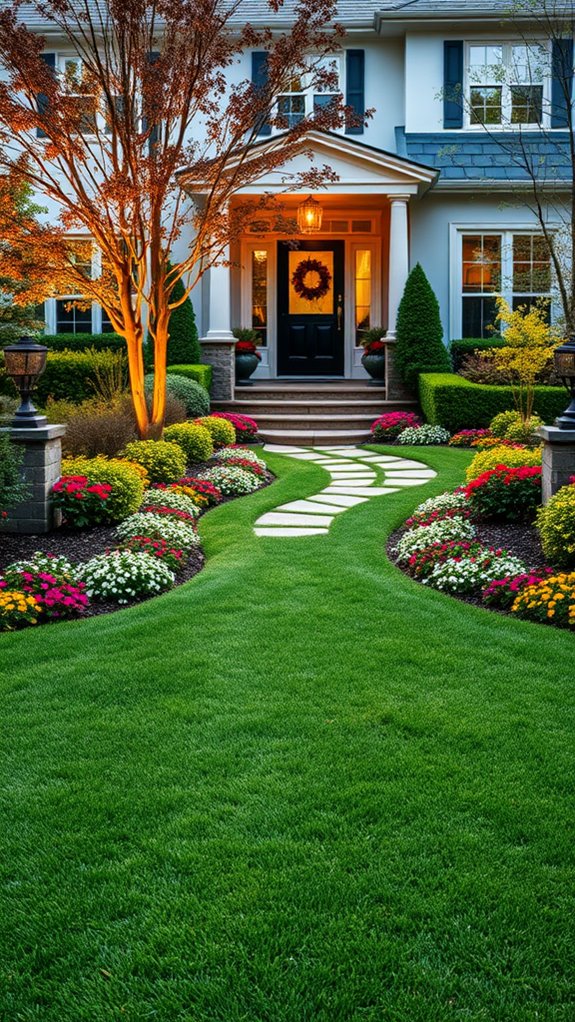
When embarking on a beautiful landscape, the first step is to evaluate our space and our style because that is the basis for a design that reflects who we are.
A comprehensive front style analysis allows us to see the home’s architecture as well as its relationship to the environment. We need to think about the scale and design of our space and how to best maximize space by balancing hardscaping with softscaping.
Taking into consideration existing features such as pathways, fences and trees, we can develop a unified appearance that can improve our curb appeal.
Let’s think of interesting details, planters, decorative lighting, etc. that will make our design sing.
Knowing our space, we are prepared to take chances with spectacular landscape.
Choose the Right Plants for Your Climate
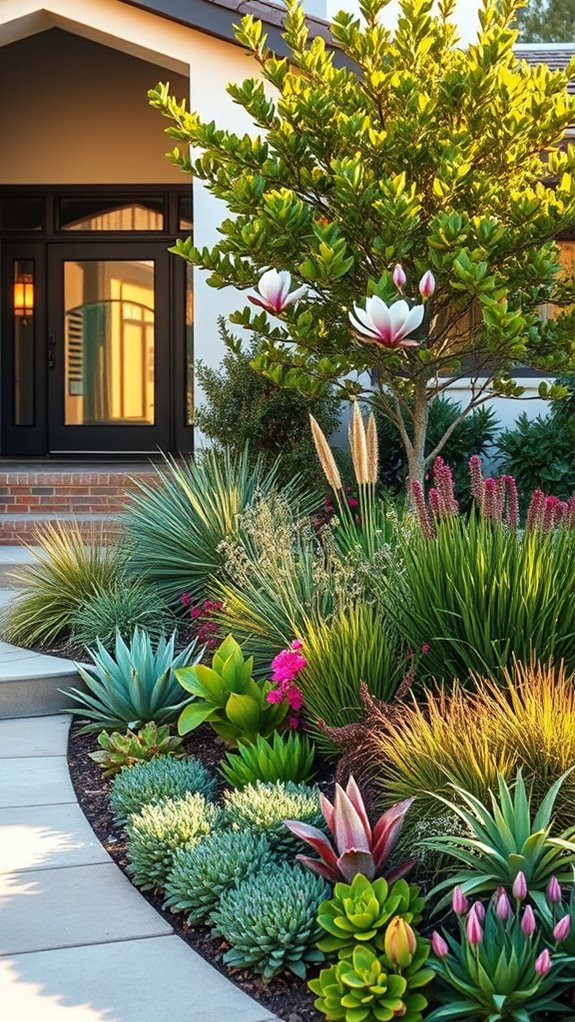
Having done the space and style assessment, we can now focus on selecting plants suited to our climate. Knowing what our climate zones are is critical when choosing plants that will grow in our own specific region.
Let’s check the plant hardiness zone for the area, which will help steer us toward resilient choices that will thrive and not just survive. For example, if we live in a warmer zone, we might experiment with colorful succulents or drought-tolerant perennials.
Or, in cooler climates, we might gravitate to hardy shrubs and evergreens that are attractive all year. By matching our plants to our climate, we will ensure a beautiful landscape that takes little upkeep and will provide lasting enjoyment in our front yard.
Incorporate Native Plants
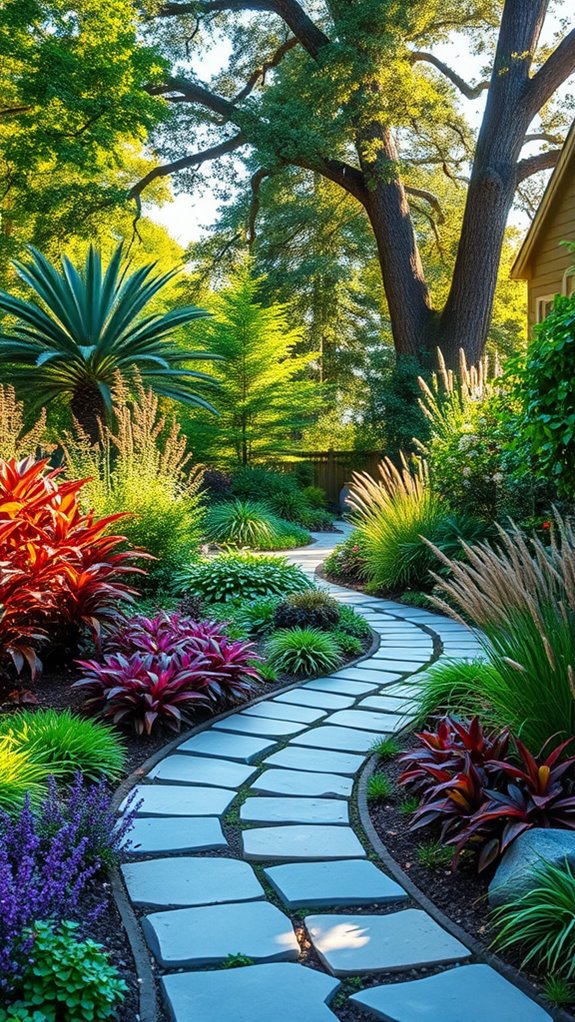
Beauty and thriving ecosystem in our own backyard will be achieved by including natives into our landscape.
Selecting native plants supports the local wildlife as well, bringing in birds, butterflies and good bugs. These plants are acclimated to our local soil and climate, thus thriving with less care.
Their deep roots also contribute to soil health by preventing erosion and facilitating nutrient cycling.
Lets declare this new method of landscaping, marrying aesthetics with environmental responsibility, as a new practice.
Visualize a vibrant garden that is a feast for our senses as well as a habitat for native wildlife.
Let’s use our collective power to turn the front yards into beautiful, sustainable spaces that work for us and for nature.
Create a Focal Point
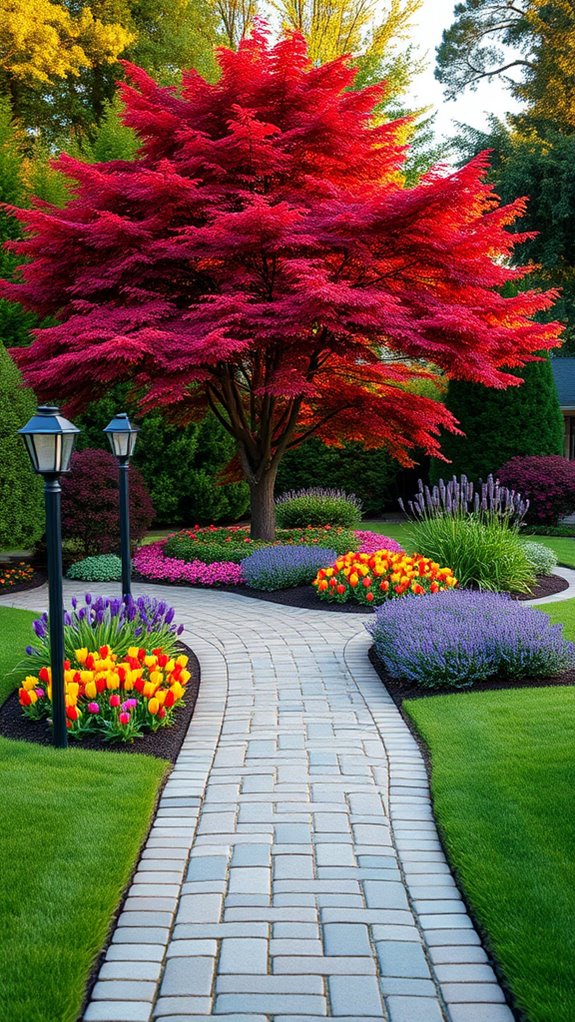
An enchanting feature can turn a nice yard into an extraordinary one.
An intentional focal point gives the eye a place to rest, and our yard a sense of purpose.
Here are three standout elements to add to your landscaping:
- Sculptural Elements: A striking statue or artistic trellis can serve as a fascinating centerpiece.
- Water Features: Adding a tranquil fountain or pond not only attracts attention but also creates a soothing ambiance.
- Vibrant Plant Groupings: Use bold, colorful flowers or unique plant shapes to form clusters that pop against the green backdrop.
Use Layering Techniques
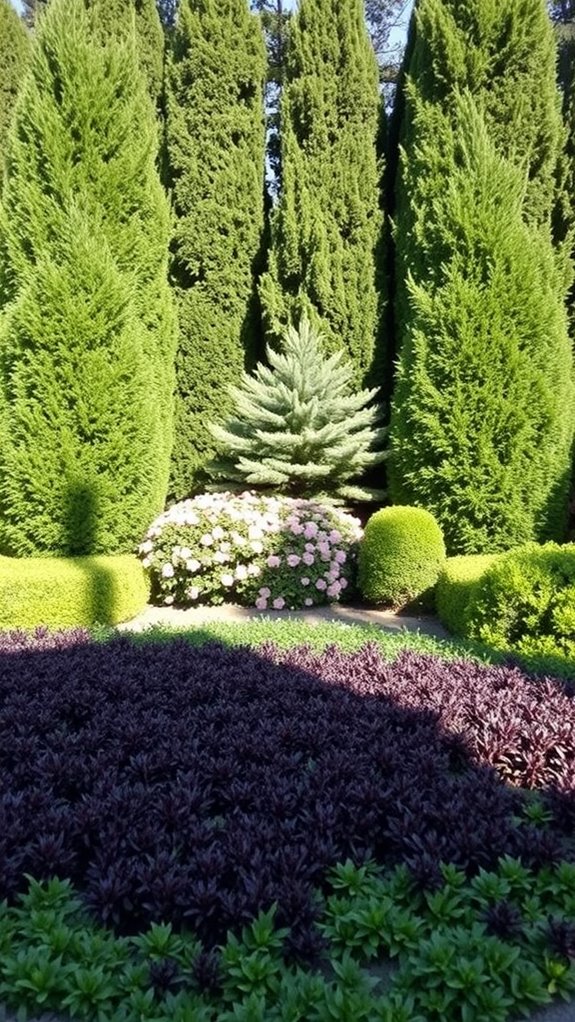
We may think of landscaping as just arranging plants, but using layering techniques will definitely enhance our outdoor spaces.
Layering plants of different heights and textures also adds depth and interest to the design. Think of medium flowering shrubs, with tall grasses in the back and low-growing flowering ground cover in the front.
This technique also adds beauty in our garden and a contrast in texture that enlivens our landscape. We can play with all sorts of foliage shapes and colors, making sure that the layers work together.
Let’s use layering to create front yards that will wow passersby!
Add Color With Seasonal Flowers
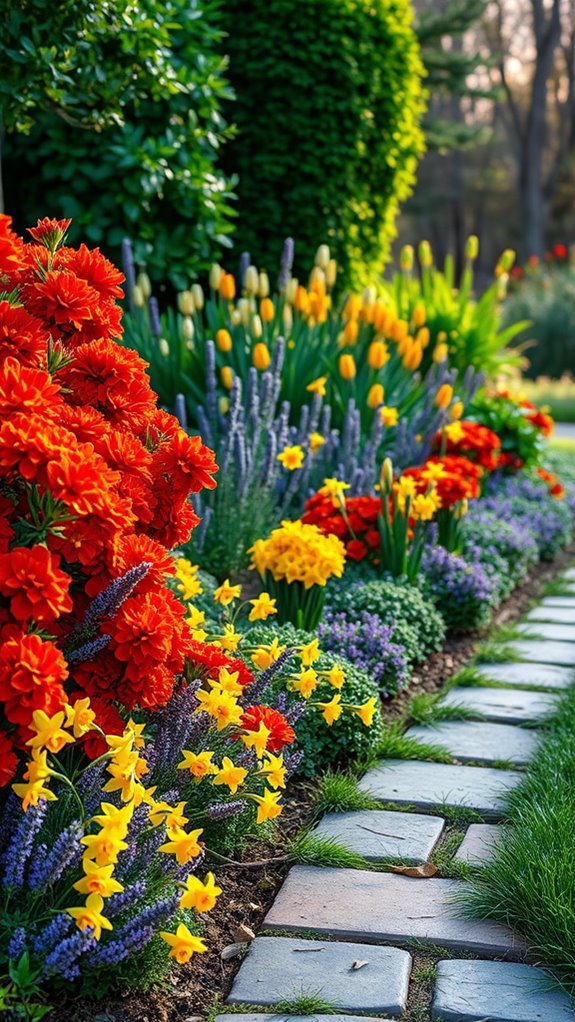
Plant layering provides an ideal backdrop for seasonal color in the form of flowers.
With the addition of annuals, we can create beautiful seasonal arrangements to dazzle our visitors. Here are three new ideas to spruce up our front landscape:
Spring Cheer: Introduce tulips and daffodils to welcome the season, layering them with perennials for a full look.
Summer Radiance: Mix zinnias and petunias for bold color, ensuring we’ve continuous blooms throughout the hot months.
Autumn Glow: Use chrysanthemums and ornamental kale to create a warm, inviting display that shifts our garden beautifully into fall.
These seasonal flowers will help us boost our curb appeal and make an impression on everyone who comes to our house!
Consider Hardscaping Elements

While we consider improvements to our landscape, hardscaping can really add to the landscape appeal.
Think of textured pavers and flagstone for smart patio areas where you can relax and entertain. These surfaces are aesthetically pleasing and offer usable space that works with our gardens.
And, stone pathways integrated into front yard, allows for exploration through our front yard, leading visitors as they reveal our design decisions. These come in many shapes and sizes that allow us to be creative while still being in tune with nature.
Choosing these hardscape features carefully is creating a memory for anyone that visits our home; we are creating an experience more than a landscape.
Lets make some magic together!
Define Pathways and Walkways

Welcoming paths and walkways are a wonderful way to lead our visitors through the environment we’ve created.
With the right materials and designs for our paths and walkways, we can create a beautiful and functional outdoor space.
Here are three fresh ideas to get us started:
- Natural Stone: Choosing irregular flagstones creates a rustic, organic look that blends seamlessly with nature.
- Permeable Pavers: These eco-friendly options allow water to drain while providing a modern aesthetic, perfect for a contemporary home.
- Curved Pathways: Instead of straight lines, we can incorporate gentle curves to soften the landscape and encourage exploration.
Utilize Decorative Edging

Even if we concentrate on plants and paths, decorative edging can lend a great deal of definition to a landscape.
Using more creative edge styles can help define a space with style in our gardens. You might even consider decorative treatments such as natural stone or brick or, even, modern metal. Each material has its own texture and color, which gives us the opportunity to customize the design to our own personality.
Curved edges can impart a softer, friendlier appearance, while straight lines can impart a more formal feel. Don’t forget to layer edging for height, as well, which will add interest.
If chosen wisely, decorative edging can enhance our front yard and help create a lasting experience for each visitor.
Incorporate Lighting for Ambiance
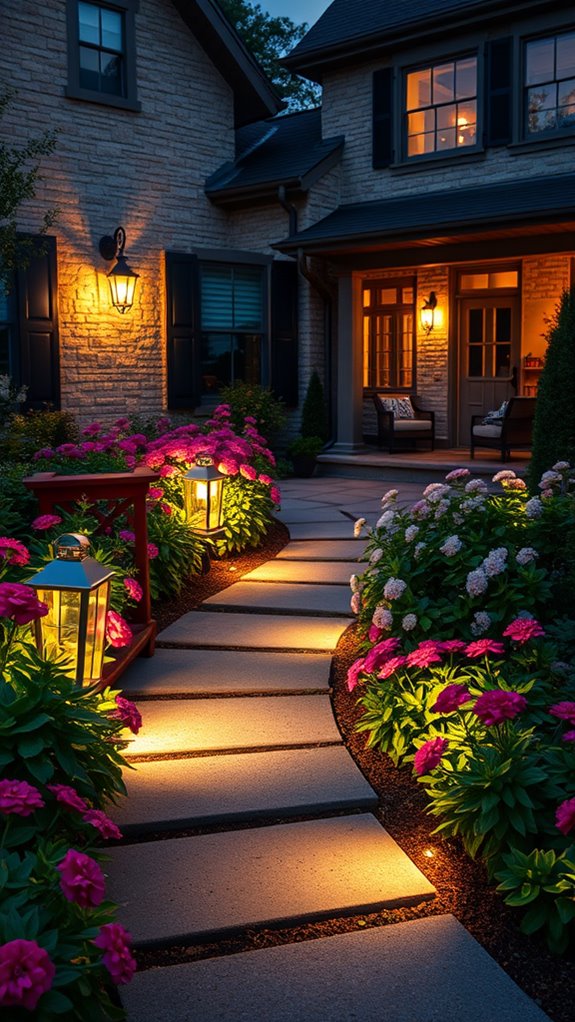
Now that we have defined the edges of our landscape with decorative borders, it is time to light up our work.
The lighting is as much part of our design as it is a way of creating a welcoming atmosphere. Consider these three novel uses of lighting for atmosphere:
- Uplighting Techniques: Strategically place uplights behind trees or shrubs to create dramatic shadows and highlight architectural features, adding depth to our space.
- Pathway Illumination: Use stylish solar or LED lights along walkways. This not only guides guests safely but also adds a touch of elegance.
- Accent Lighting: Incorporate soft, warm lights around focal points, like a fountain or garden art, to draw attention and create a cozy atmosphere.
Add Outdoor Seating Areas
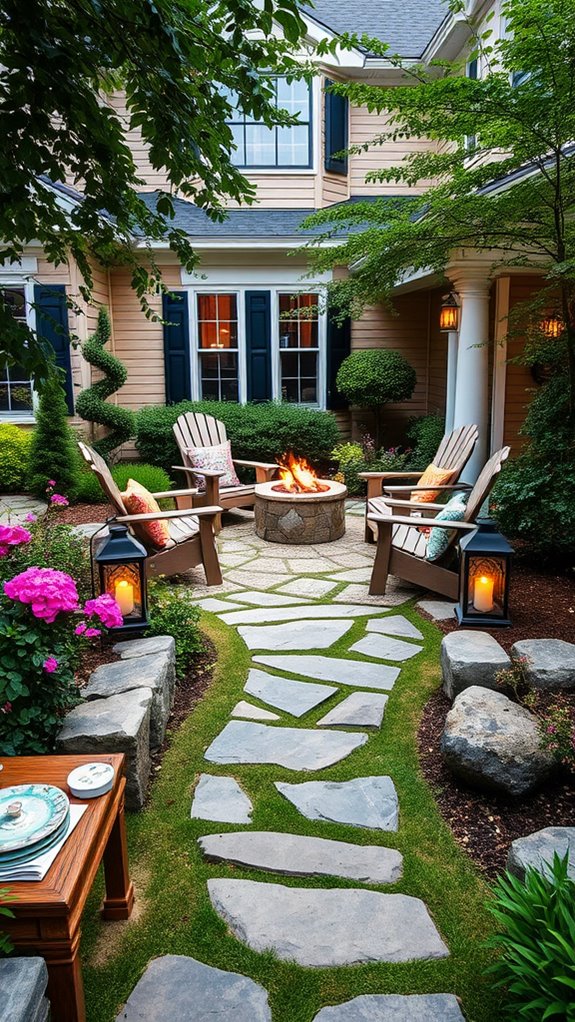
Outdoor seating areas can create an oasis out of our landscape.
Think intimate spaces with chic outdoor furniture for morning coffees or late-night chats. We can plan our seating to fit our lives, whether that be a bistro set for chic entertaining or a large sectional for family BBQs.
Think weather-resistant wicker, or sleek metal, and durability and comfort. We could throw some colorful pillows and throw blankets to liven things up and provide some comfort.
Placing these seating areas in a green oasis or under a lovely pergola will not just boost our curb appeal but offer a more inviting space for family and friends.
Let’s make our outdoor space magical!
Maintain a Clean Lawn

A neat lawn can do wonders for the look of our home.
It is the first thing people see and we want to make an impression!
So how do we get that gorgeous look? Here’s how.
1. Regular Lawn Mowing: Let’s set a schedule to mow our lawn frequently.
Maintaining the turf at an optimal height not only is aesthetically pleasing but encourages healthy growth.
2. Weed Control: We can’t let pesky weeds take over!
We can keep our lawn clean by using organic weed control and by implementing preventative practices.
3. Debris Removal: Let’s keep an eye out for fallen leaves and twigs.
By removing debris on a regular basis, we ensure our lawn has a neat and tidy appearance.
Prune and Trim Regularly
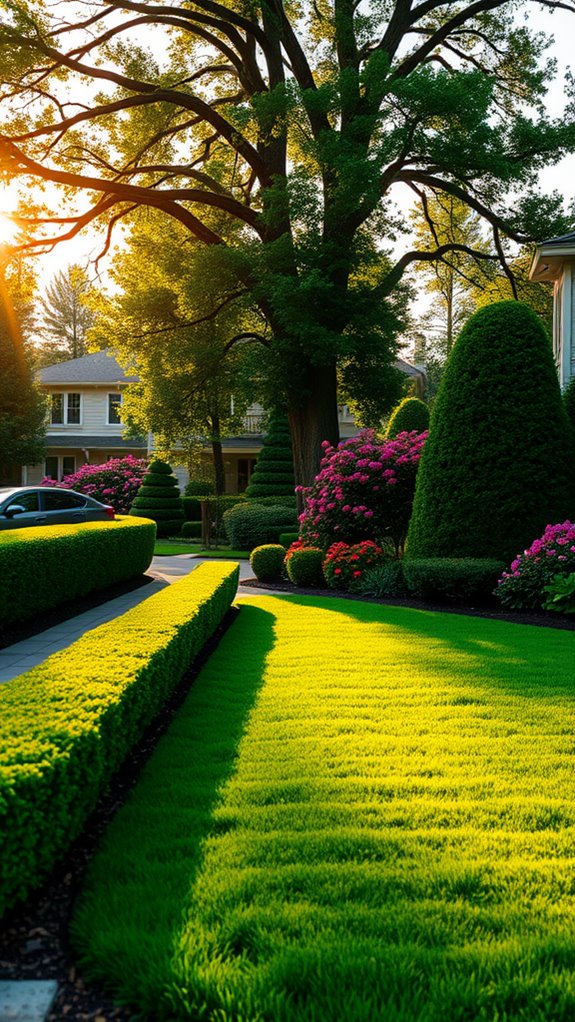
To transform our landscape it takes more than a ready lawn; we need to consistently prune and trim our plants to keep them healthy and aesthetically appealing.
Pruning is essential, done seasonally, cutting off dead or infected branches in order to spur new growth. With some good trimming, we can keep our shrubs and trees healthy and improve our homes’ curb appeal.
This is something we want to make a priority on our gardening calendar, and think about each of the plants individually. Timing is everything; some will do better pruned in winter, others in spring.
Mulch for Aesthetic and Health
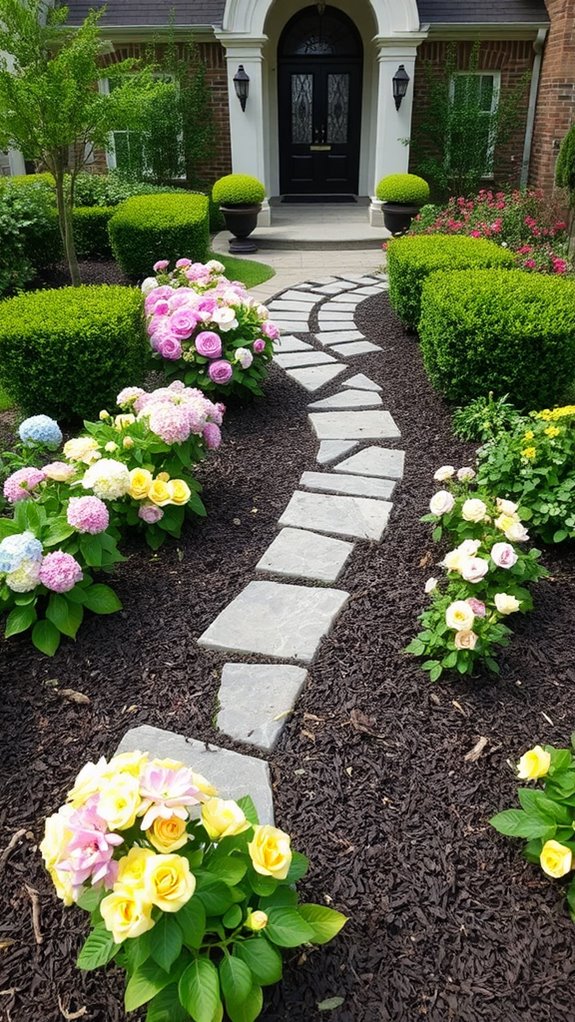
Once we have addressed pruning and trimming, we must consider another key component, mulch.
This multi-functional layer beautifies our landscape as well as plant health.
Let’s explore some mulch types and their benefits:
- Wood Chips: They break down slowly, enriching the soil while providing a rustic look.
- Cocoa Hulls: These offer a rich, chocolate scent and help retain moisture, but be cautious if we’ve pets!
- Rubber Mulch: Durable and colorful, it’s perfect for play areas, although it doesn’t improve soil quality.
Use Containers for Versatility
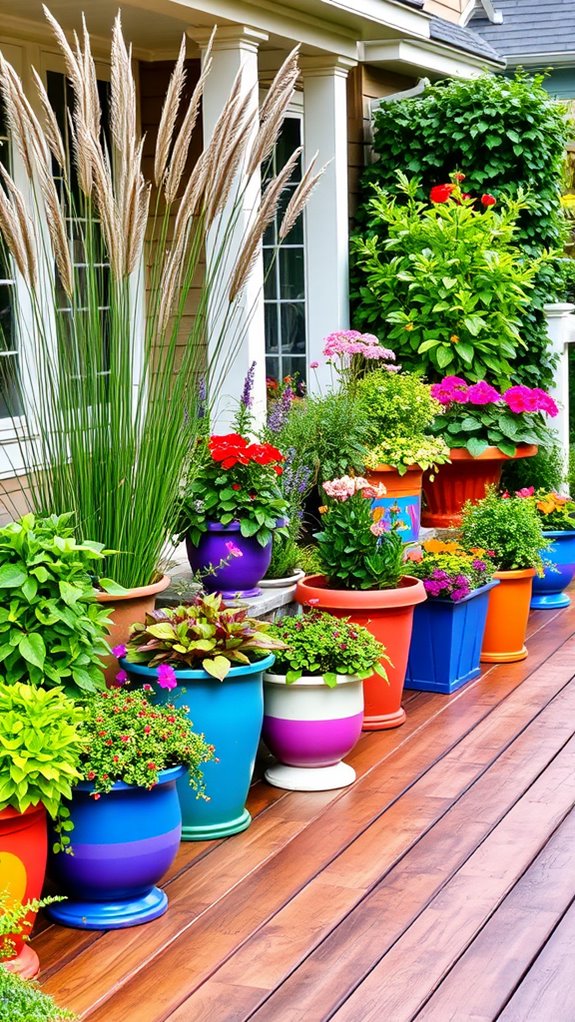
Landscape is, of course, something we think of as planted in the ground, but containers can elevate our outdoor spaces, quite literally and in other ways.
Container gardening gives us the freedom to play with different plants, creating stunning displays that showcase our individual tastes. It’s easy to combine flowers, herbs or even small shrubs for a lively appearance.
We can change out our containers seasonally, replacing summer flowers with winter evergreens or autumn leaves. This helps keep our landscape dynamic and also helps us adapt to changing climates and trends.
Containers can also be strategically placed to draw the eye to focal points and make our front yard more eye appealing and engage visitors.
Consider Water Features

Water elements can be a wonderful addition to our outdoor environments because the play of sound and light and movement they create is so interesting.
These elements can turn our front yard into a peaceful retreat, from the soft sound of a bubbling fountain to the quiet calm of a pond.
Here are three innovative ways to use water features:
- Fountain Placement: Strategically position fountains near entryways or patios to create a warm welcome with their calming sound.
- Pond Maintenance: Consider a small pond for wildlife attraction. Regular maintenance guarantees it stays clean and inviting.
- Container Water Gardens: If space is limited, use stylish containers for mini water gardens, making it easy to care for and visually striking.
Let’s take our outdoor living spaces to a peaceful retreat!
Add a Personal Touch With Art
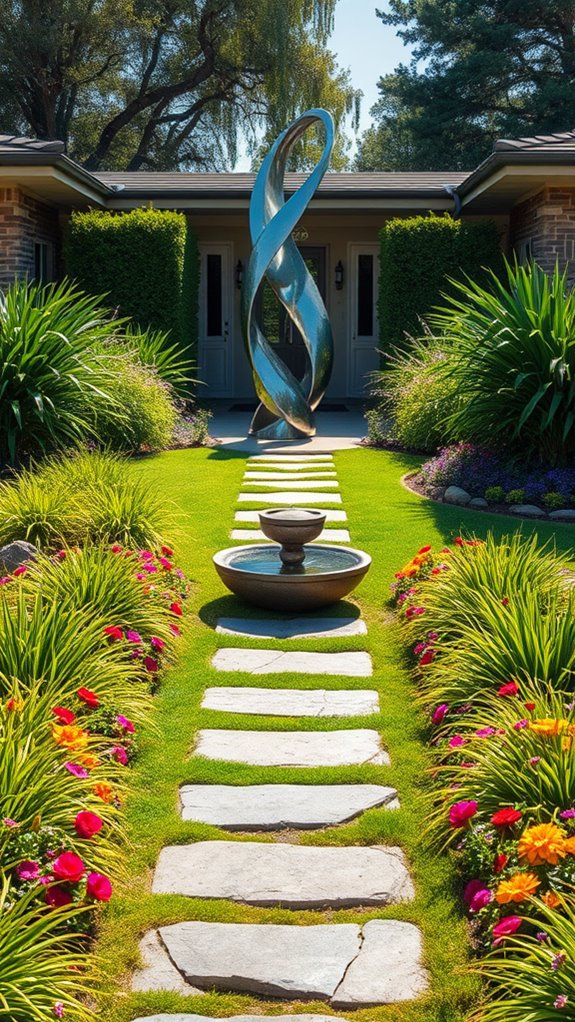
Water features add soothing sounds to our yards, but art is what can really make our front yards our own.
Or perhaps you might consider including some dramatic garden art that can serve as exclamation points, conversation starters. Whether we prefer fanciful beasts or kitschy figures, they can lend character to our yards.
And decorative signs can announce our interests or even a friendly hello. We could buy decorative personalized signs with our family name or favorite sayings that served as art and utility.
Install a Welcoming Front Door

The front door says a lot about the style of our home and it welcomes guests to come in.
To help you make that perfect first impression, let’s concentrate on these three things:
- Door Color: Consider a bright or fun color that works with our exterior, like a bold navy or bright red, to give our door personality.
- Hardware Selection: Choose fashionable door handles and locks to beautify our door. A brass finish can look lovely, too, as can a matte black option.
- Decorative Accents: A seasonal wreath or door mat can help inject some warmth and personality into our entryway and make our home feel more inviting year round.
Enhance Privacy With Landscaping

We all love our yards, but a little landscaping for privacy can turn our yards into peaceful sanctuaries.
Let’s consider options in fencing, from classic wood panels to contemporary vinyl, which will obscure unsightly views while contributing character. If we want a softer touch, consider hedges such as boxwood or arborvitae, which offer privacy while also contributing greenery and texture.
These elements layered might give us a natural screen that is welcoming but also protective. Climbing plants on trellises or ornamental screens will also contribute to this.
If designed carefully, no one has to see into our front yards, and we should be able to relax in our yards without feeling on display. Time to get creative and up our privacy!
Plan for Year-Round Interest
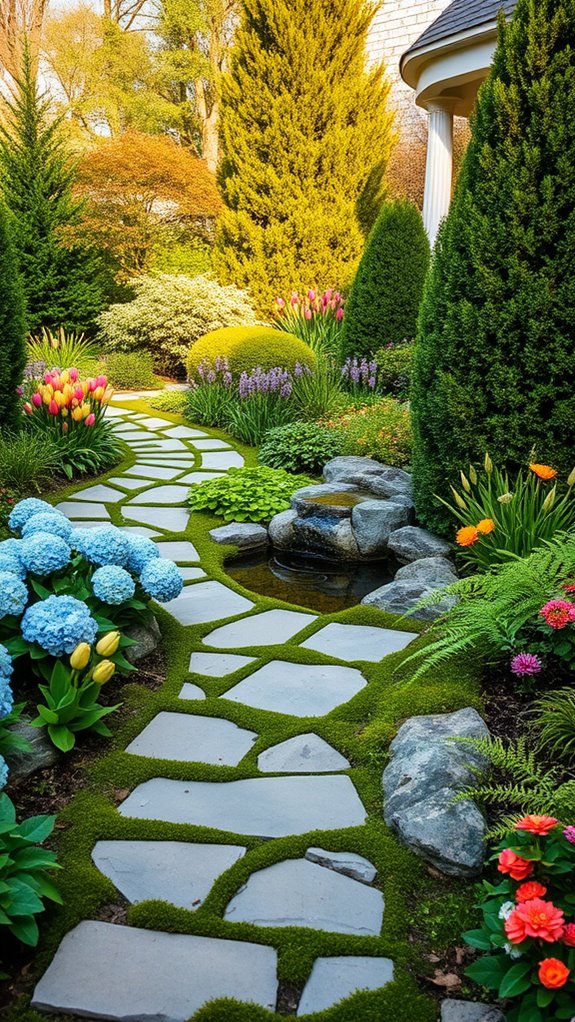
Establishing a getaway in our yards leads to another consideration, planning for year-round interest.
Using a mix of elements allows us to honor the seasons, and ensure our landscape is alive throughout the year. Here are three new ideas:
- Evergreen Selections: Choose a mix of evergreen plants to provide structure and color during colder months, making our yard inviting even in winter.
- Seasonal Blooms: Plant a variety of perennials that bloom at different times, guaranteeing that something is always in flower, enchanting our senses.
- Textured Features: Incorporate hardscaping elements like stone paths or decorative boulders to add visual interest during the off-seasons, creating a dynamic landscape all year long.
Let’s work together to build an amazing outdoor space that will wow year round!
Keep Maintenance in Mind
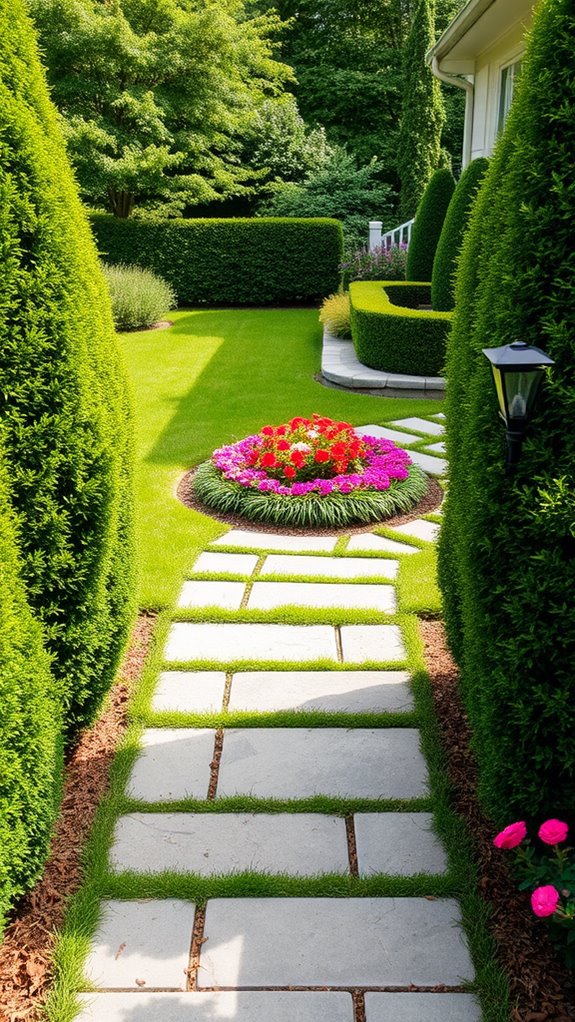
While we are busy creating gorgeous landscapes, we must not forget to maintain them.
Low maintenance gardens will allow us to enjoy outdoor space without feeling we need to tend to them constantly.
Let us select native plants and drought-adapted species, which flourish without much fuss.
The arrangement is also important, since clustering plants requiring similar watering can help our maintenance work over the seasons.
Mulch can be added as well to improve appearance, hold moisture in and control weeds.

